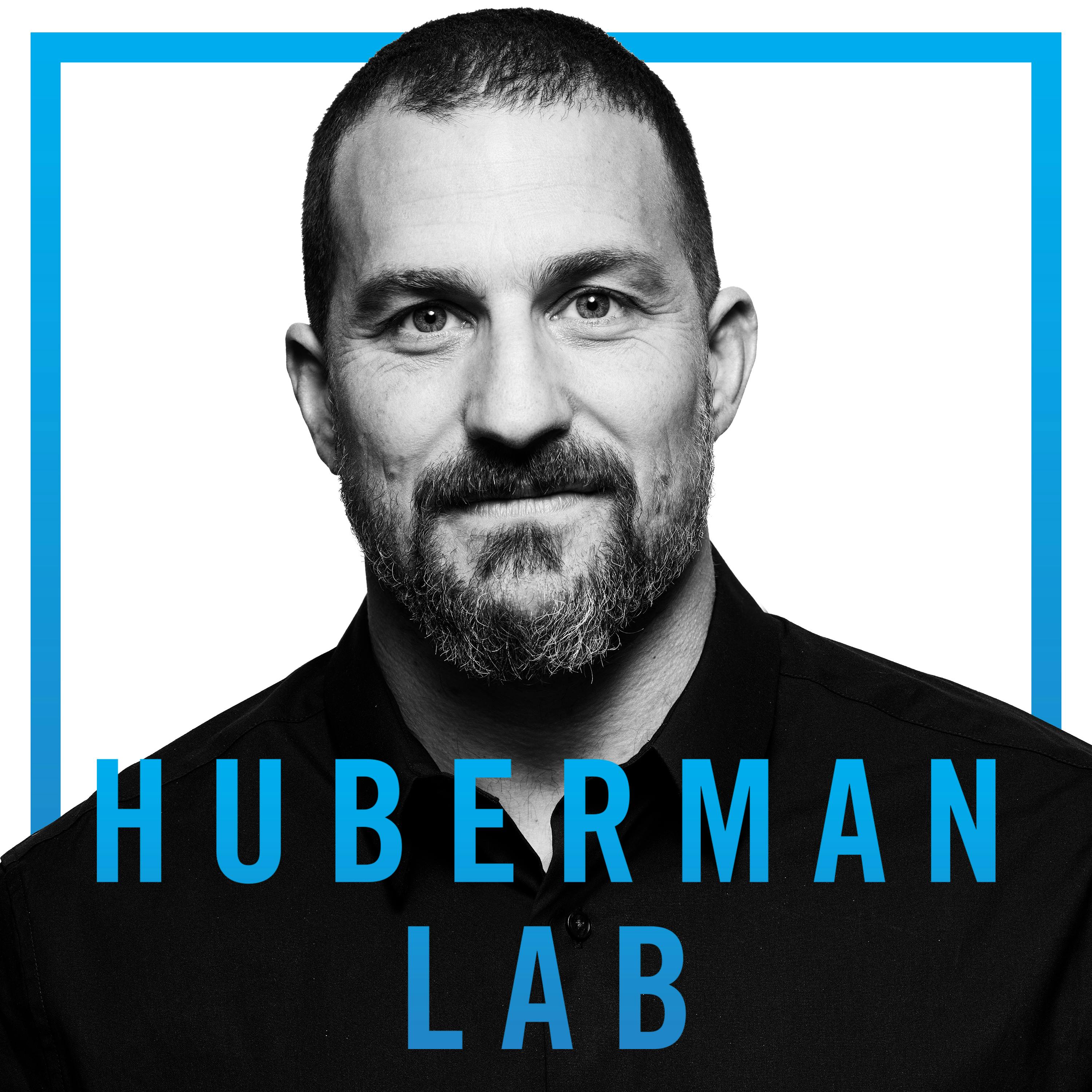
Dr. Terry Sejnowski: How to Improve at Learning Using Neuroscience & AI

Huberman Lab
Deep Dive
Why is understanding the algorithmic level of brain function important?
The algorithmic level is crucial because it bridges the gap between the implementation details of neural circuits and the overall behavior of the brain. Algorithms, like recipes, provide a step-by-step understanding of how neural circuits function, which is essential for understanding complex cognitive behaviors.
How does the basal ganglia contribute to learning and behavior?
The basal ganglia are involved in learning sequences of actions to achieve goals. It uses a simple algorithm to predict the next reward based on actions, updating synaptic plasticity to improve future actions and building a value function that guides behavior.
What role does dopamine play in motivation and learning?
Dopamine is a neuromodulator that drives motivation and learning by signaling the value of actions and outcomes. It updates the value function in the brain, which helps in making better decisions for future rewards.
How does procedural learning differ from cognitive learning?
Procedural learning is automatic and efficient, involving subcortical structures like the basal ganglia, and is essential for tasks that require quick execution. Cognitive learning is slower and involves conscious thought, relying on cortical areas for problem-solving and decision-making.
What is the significance of sleep spindles in memory consolidation?
Sleep spindles are waves that travel through the cortex during non-REM sleep and are crucial for consolidating experiences into long-term memory. They help integrate new experiences with existing knowledge without overwriting it.
How can AI be used to improve learning and knowledge acquisition?
AI can be used to forage for new information, generate ideas, predict future outcomes, and assist in analyzing health data. It can also help in understanding complex cognitive behaviors by providing insights that are difficult to obtain through traditional methods.
What are the potential benefits and drawbacks of using drugs like Ambien for learning?
Ambien can increase sleep spindles, enhancing memory consolidation and recall. However, it can also cause temporary amnesia and dissociative effects, making it a double-edged tool for learning.
How does exercise impact cognitive function and mitochondrial health?
Exercise is the best drug for improving cognitive function and mitochondrial health. It rejuvenates the brain, enhances immune function, and benefits every organ system. Regular exercise can also help maintain vigor and cognitive velocity as we age.
What is the relationship between ketamine and schizophrenia?
Ketamine induces symptoms similar to schizophrenia, such as psychosis and auditory hallucinations, by binding to NMDA receptors and causing overexcitation. This similarity suggests that schizophrenia may involve an imbalance between excitatory and inhibitory systems in the brain.
How can AI be leveraged to predict future outcomes in complex systems?
AI can analyze vast amounts of data and simulate different scenarios to predict future outcomes. For example, it can predict hurricane landfall locations more accurately than traditional methods by learning from historical data and simulations.
- Motivation is governed by a simple algorithm related to dopamine and reward prediction.
- The basal ganglia plays a crucial role in learning sequences of actions and thoughts, contributing to skill development and expertise.
- Learning involves updating a "value function" that guides behavior based on past experiences.
Shownotes Transcript
In this episode, my guest is Dr. Terry Sejnowski, Ph.D.), professor of computational neurobiology at the Salk Institute for Biological Studies. He is world-renowned for exploring how our brain processes and stores information and, with that understanding, for developing tools that enable us to markedly improve our ability to learn all types of information and skills.
We discuss how to learn most effectively in order to truly master a subject or skill. Dr. Sejnowski explains how to use AI tools to forage for new information, generate ideas, predict the future, and assist in analyzing health data and making health-related decisions.
We also explore non-AI strategies to enhance learning and creativity, including how specific types of exercise can improve mitochondrial function and cognitive performance. Listeners will gain insights into how computational methods and AI are transforming our understanding of brain function, learning, and memory, as well as the emerging roles of these tools in addressing personal health and treating brain diseases such as Alzheimer’s and Parkinson’s.
Access the full show notes for this episode at hubermanlab.com).
Pre-order Andrew's new book, Protocols: protocolsbook.com)
Thank you to our sponsors
AG1: https://drinkag1.com/huberman)
BetterHelp: https://betterhelp.com/huberman)
Helix Sleep: https://helixsleep.com/huberman)
David Protein: https://davidprotein.com/huberman)
LMNT: https://drinklmnt.com/huberman)
Joovv: https://joovv.com/huberman)
Timestamps
00:00:00 Dr. Terry Sejnowski
00:02:32 Sponsors: BetterHelp & Helix Sleep
00:05:19 Brain Structure & Function, Algorithmic Level
00:11:49 Basal Ganglia; Learning & Value Function
00:15:23 Value Function, Reward & Punishment
00:19:14 Cognitive vs. Procedural Learning, Active Learning, AI
00:25:56 Learning & Brain Storage
00:30:08 Traveling Waves, Sleep Spindles, Memory
00:32:08 Sponsors: AG1 & David
00:34:57 Tool: Increase Sleep Spindles; Memory, Ambien; Prescription Drugs
00:42:02 Psilocybin, Brain Connectivity
00:45:58 Tool: ‘Learning How to Learn’ Course
00:49:36 Learning, Generational Differences, Technology, Social Media
00:58:37 Sponsors: LMNT & Joovv
01:01:06 Draining Experiences, AI & Social Media
01:06:52 Vigor & Aging, Continued Learning, Tool: Exercise & Mitochondrial Function
01:12:17 Tool: Cognitive Velocity; Quick Stressors, Mitochondria
01:16:58 AI, Imagined Futures, Possibilities
01:27:14 AI & Mapping Potential Options, Schizophrenia
01:30:56 Schizophrenia, Ketamine, Depression
01:36:15 AI, “Idea Pump,” Analyzing Research
01:42:11 AI, Medicine & Diagnostic Tool; Predicting Outcomes
01:50:04 Parkinson’s Disease; Cognitive Velocity & Variables; Amphetamines
01:59:49 Free Will; Large Language Model (LLM), Personalities & Learning
02:12:40 Tool: Idea Generation, Mind Wandering, Learning
02:18:18 Dreams, Unconscious, Types of Dreams
02:22:56 Future Projects, Brain & Self-Attention
02:31:39 Zero-Cost Support, YouTube, Spotify & Apple Follow & Reviews, Sponsors, YouTube Feedback, Protocols Book, Social Media, Neural Network Newsletter